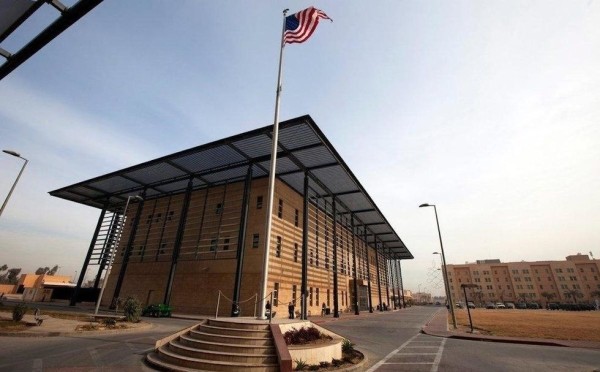The Army’s next-generation artillery system can nail targets at twice the range of the service’s existing howitzers, but apparently it will remain nameless for the time being despite recent posts on social media from its newly-appointed operational test unit.
According to photos recently posted online by the 4th Battalion, 27th Field Artillery Regiment, the Army had purportedly christened the XM1299 Extended Range Cannon Artillery (ERCA) the ‘Iron Thunder’ during a ceremony at Picatinny Arsenal in New Jersey last week.
The name was especially appropriate given that the Fort Bliss-based 4-27 FA — also nicknamed ‘Iron Thunder’ since its formation more than a century ago — will serve as the ERCA’s new operational test unit, according to the announcement.
“Our soldiers will be the first to be trained on and employ the Army’s newest artillery capability,” the unit wrote on Facebook. “We cannot wait for these to start hitting our motorpool.”

Shortly after Task & Purpose published this story regarding the ERCA’s new name, officials from Army Futures Command reached out with a message: the ERCA isn’t actually named ‘Iron Thunder’ after all despite the 4-27 FA’s post stating as much.
According to Ashley John, a spokesman for PEO Ground Combat Systems, only the first specific ERCA prototype christened at Picatinny Arsenal will bear the name ‘Iron Thunder,’ while “each prototype vehicle will have a unique unofficial name.”
“The Army has not officially named the ERCA system,” Army Futures Command spokesman Col. Cobb Laslie told Task & Purpose in a statement. “The Facebook post by 4-27FA inaccurately implied the ERCA was named ‘Iron Thunder.'”
Indeed, the original 4-27 FA Facebook post has since been updated to reflect that the Army “has not officially named the XM 1299.”
Developed in response to increasing concerns over the growing artillery capabilities of near-peer adversaries like Russia and China, the ERCA program is one of five major programs clustered under the Army’s long-range precision fires (LRPF) initiative that’s become a major modernization priority for the service in recent years.
“The Army says that longer-range artillery systems are needed to respond to what DoD calls the enemy anti-access, area denial (A2/AD) environment (layered and integrated long-range
precision-strike systems, littoral anti-ship capabilities, air defenses, and long-range artillery and rocket systems), which can theoretically keep U.S. forces at bay and deny freedom of movement,” according to a recent Congressional Research Service report on the Pentagon’s LRPF efforts.
The ERCA has recently proven itself a formidable long-range weapon system, capable of striking a target at 43 miles (70 km) away with a salvo of M982A1 Excalibur guided artillery shells during testing in March — far outstripping the range of both the M109A7 Paladin (18 miles, or 30 km, with a rocket-assisted projectile) and the M777 (25 miles, or 40 km, with a rocket-assisted projectile) howitzers.

The Army plans on fielding 18 ERCA prototypes to the 4-27 FA for operational testing by fiscal year 2023, with the effort projected to end in October 2023 “to gather information for future ERCA increments,” according to a June 2020 assessment from the Government Accountability Office.
The Army’s plan to build a fleet of ERCA systems is estimated to cost the service at least a half-billion dollars, according to the GAO assessment, which noted that the service expects the ERCA’s related technologies to be “mature upon the completion of the rapid prototyping effort in 2023.”
While the lucky soldiers with the 4-27 FA will get to put the ERCA through its paces over the coming years, the service plans on continuing to push the range of the supergun beyond 70 km and, in time, procure up to 77 ERCA vehicles through fiscal year 2026, according to the Congressional Research Service report.
ERCA, along with its companion long-range precision fires program, should be considered “fundamentals components of the Army’s traditional battlespace,” according to the CRS report, “and they play an important fire support role in brigade, division, and corps-level ground combat operations — a role that the Army has organized, equipped, and trained for arguably since the Second World War to present day.”
Update: This post originally stated the XM1299 Extended Range Cannon Artillery (ERCA) had been christened ‘Iron Thunder.’
More great stories on Task & Purpose
- This Captain is the first woman to lead Army Rangers in combat
- 8 months after getting Pentagon approval, Alwyn Cashe still hasn’t received the Medal of Honor
- The Pentagon’s filtered version of the Kabul rescue mission is far different from what really happened
- ‘I request trial by court-martial’ — The real story behind that one beloved scene in ‘Band of Brothers’
- No, F-22 pilots aren’t ‘walking off the job’ to avoid the COVID-19 vaccine
Want to write for Task & Purpose? Learn more here and be sure to check out more great stories on our homepage.

























